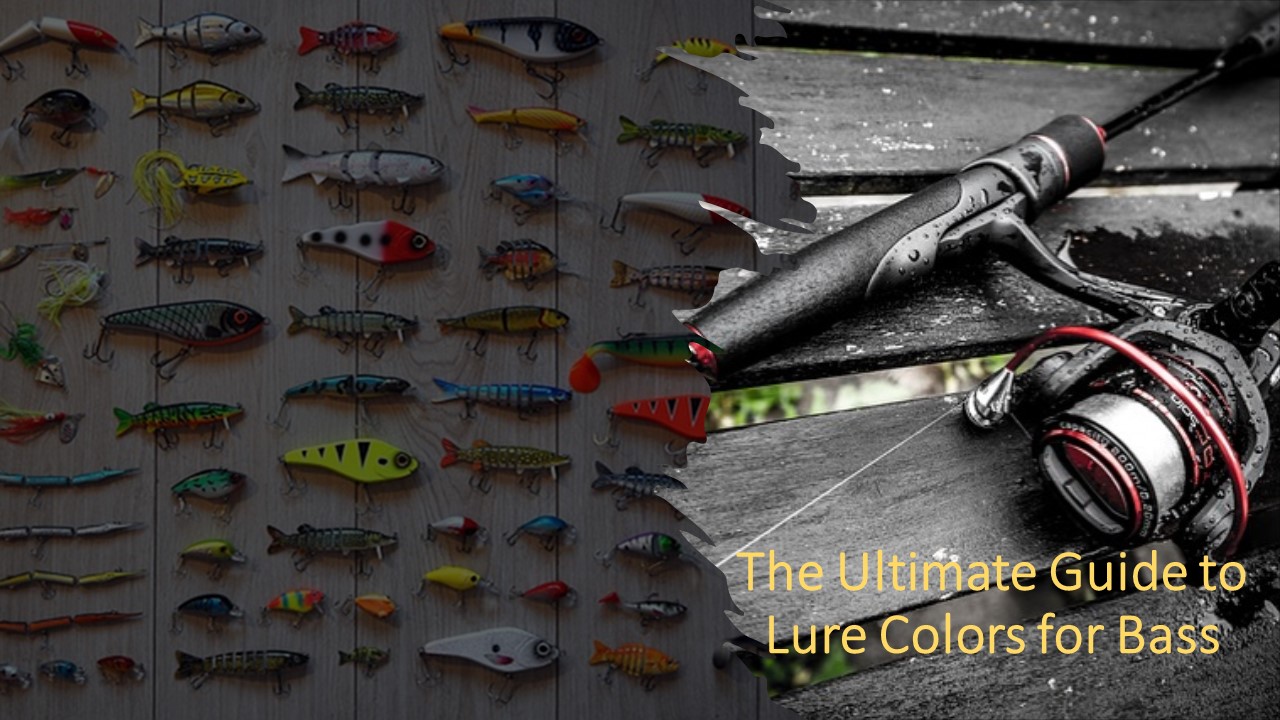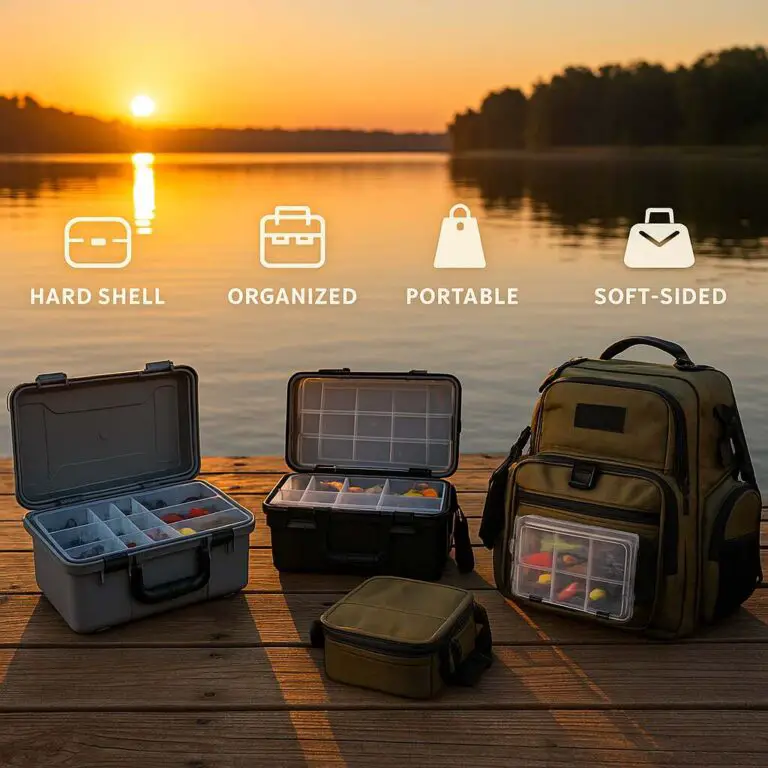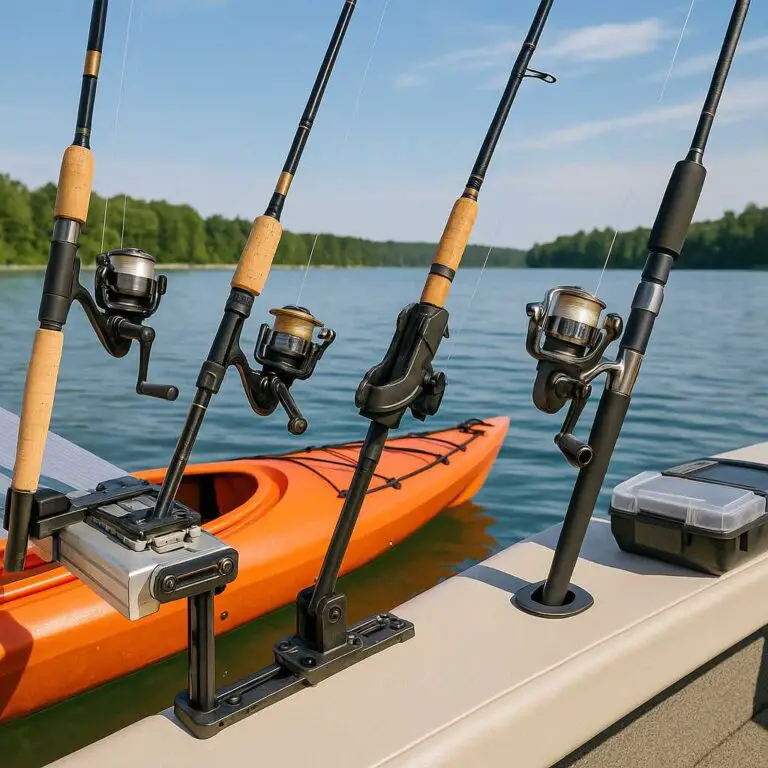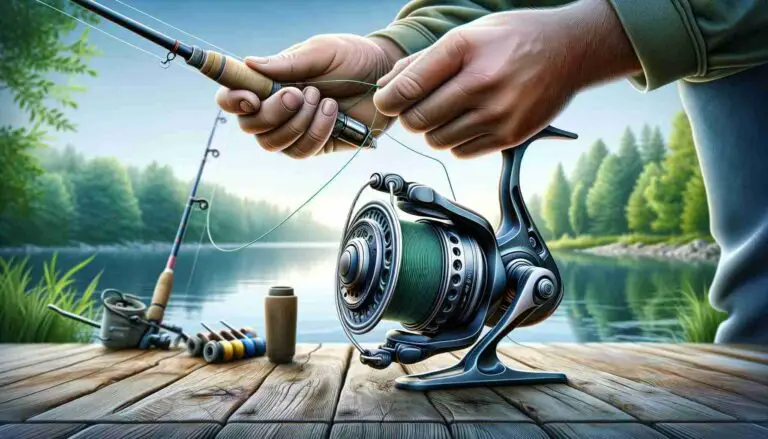Bass fishing is a popular sport enjoyed by anglers all around the world. However, one of the key factors that can make or break a fishing trip is choosing the right lure color. Lure color selection can be influenced by various factors such as water clarity, light conditions, and bass behavior, making it a critical aspect of bass fishing. In this ultimate guide to lure colors for bass, I will discuss the different types of lure colors, the best lure colors for white bass, plastic worms, crankbaits, and spinnerbaits, and how to use a bass fishing color chart to your advantage.
By the end of this guide, you will have a better understanding of how to choose the best bait for your next fishing trip and increase your chances of a successful catch.
Let’s dive in!
Understanding Lure Colors for Bass Fishing
When it comes to bass fishing, the color of your lure can be just as important as the bait itself. The right color can trigger a strike from a hungry bass, while the wrong color can cause them to ignore your bait completely. Here’s what you need to know about lure colors for bass fishing:
There are three main types of lure colors: solid, translucent, and metallic. Solid colors are opaque and do not allow any light to pass through them. Translucent colors allow some light to pass through, giving them a more natural appearance in the water. Metallic colors are reflective and can mimic the look of baitfish scales.
When it comes to selecting lure colors, there are three main color properties to consider: hue, saturation, and brightness. Hue refers to the specific color of the lure, such as green, blue, or red. Saturation refers to how pure or intense the color is. A highly saturated color will appear brighter and more noticeable in the water. Brightness refers to how light or dark the color is.
How does Bass perceive Lure Colors? Bass have highly developed vision and can see colors differently depending on the water conditions. In clear water, bass can see a wider range of colors, while in murky or stained water, they may only be able to distinguish between light and dark colors.
Additionally, the amount of sunlight and the angle of the sun can affect how bass perceives lure colors. This is why it’s important to consider the water conditions and the time of day when selecting lure colors.
White Bass Bait: Choosing the Right Lure Color for Maximum Success
White bass is a popular game fish that can be found in rivers, lakes, and reservoirs across North America. When it comes to choosing the right lure color for white bass, there are a few factors to consider:
Characteristics of White Bass: White bass are known for their schooling behavior and can often be found in large groups in the same area. They are active feeders and can be caught throughout the day, but are most active during low-light periods such as dawn and dusk.
Best Lure Colors for White Bass: The best lure colors for white bass are typically bright and flashy, which can trigger a reaction strike. Silver, white, and chartreuse are all popular colors for white bass fishing. Silver imitates the look of baitfish scales, while white and chartreuse can be easily seen in murky or stained water.
Size and Shape of White Bass Bait: When selecting the size and shape of your white bass bait, consider the water depth and the fishing technique you will be using. For example, in shallow water, a smaller bait may be more effective, while in deeper water, a larger bait may be necessary. Jigging and casting with spoons, spinners, or crankbaits are all effective techniques for white bass fishing.
In summary, when it comes to white bass fishing, choosing the right lure color can make all the difference. Bright and flashy colors such as silver, white, and chartreuse are popular choices, and the size and shape of the bait should be adjusted based on the fishing technique and water depth.
Bass Fishing Color Chart: How to Use It to Your Advantage
A bass fishing color chart can be a helpful tool for anglers who want to select the right lure color for their fishing conditions. A color chart typically includes a range of colors and recommendations for when each color is most effective. Here’s how to use a bass fishing color chart to your advantage:
Reading a Bass Fishing Color Chart: A bass fishing color chart typically consists of a grid or chart with different colors listed along the top or side. Each color is usually accompanied by a recommendation for when it is most effective. For example, a color chart may suggest that green pumpkin is a good color for clear water, while black or blue is more effective in murky water.
Interpreting the Recommendations: To use a bass fishing color chart effectively, you need to interpret the recommendations based on your fishing conditions. Consider the water clarity, light conditions, and the type of baitfish in the area. If the water is clear and the sun is bright, a more natural or translucent color may be more effective. If the water is murky or stained, a brighter or more solid color may be necessary.
Examples of Popular Color Charts
There are many different bass fishing color charts available, and some are tailored to specific regions or bodies of water. Some popular color charts include:
- Strike King Lure Company’s Pro-Model Color Chart
- Berkley’s PowerBait Color Chart
- Gary Yamamoto’s Senko Color Chart
These color charts provide a range of color options and recommendations for different water conditions and fishing techniques.
Remember to consider the water clarity, light conditions, and the type of baitfish in the area when interpreting the recommendations. With the right lure color, you can increase your chances of a successful catch.
Plastic Worm Colors Chart: Matching Your Lure Color to the Environment
When it comes to bass fishing with plastic worms, selecting the right color can be crucial for enticing a strike. A plastic worm colors chart can be a helpful tool for matching your lure color to the surrounding environment. Here’s how to use a plastic worm colors chart to your advantage:
Importance of Matching Your Lure Color to the Environment: Matching your plastic worm color to the surrounding environment can make your bait look more natural and increase its effectiveness. For example, in clear water, a more natural color such as green pumpkin or watermelon can be effective. In murky water, a brighter or more solid color such as black or junebug may be necessary to stand out and catch the attention of bass.
Using a Plastic Worm Colors Chart
A plastic worm colors chart typically includes a range of colors and recommendations for when each color is most effective. Colors may be labeled based on their appearance, such as green pumpkin, watermelon, or motor oil. The chart may also include recommendations for when each color is most effective based on the water conditions.
Selecting the Right Color
To select the right plastic worm color for your fishing conditions, consider the water clarity, light conditions, and the type of baitfish in the area. If the water is clear and the sun is bright, a more natural or translucent color may be more effective. If the water is murky or stained, a brighter or more solid color may be necessary.
Rigging Your Plastic Worm
In addition to selecting the right color, how you rig your plastic worm can also affect its effectiveness. Texas rigging and Carolina rigging are both popular techniques for plastic worm fishing. Texas rigging involves inserting the hook into the head of the worm and rigging it weedless, while Carolina rigging involves rigging the worm with a leader and a weight to create a natural-looking movement.
Remember to consider the water clarity, light conditions, and the type of baitfish in the area when selecting your plastic worm color. With the right color and technique, you can entice a strike from even the most finicky bass.
Best Crankbait Colors: Choosing the Right Hue for Different Water Conditions
Crankbaits are a versatile lure option for bass fishing and come in a variety of colors. However, choosing the right crankbait color can be critical to success. Here’s how to choose the best crankbait colors for different water conditions:
Benefits of Using Crankbaits: Crankbaits are effective because they mimic the movement and appearance of baitfish, triggering a reaction strike from bass. They come in various shapes, sizes, and colors, making them a versatile option for different fishing conditions.
Best Crankbait Colors for Clear Water: In clear water, bass has a clear line of sight and can see a wider range of colors. Natural-looking colors such as silver, gold, and chrome can be effective in clear water conditions. A crankbait with a translucent body and a natural color pattern can also be a good option. (Here is a whole article about what color lure to use in clear water)
Best Crankbait Colors for Stained Water: In stained water, bass may have a harder time distinguishing between colors. A brighter, more solid color such as chartreuse or fire tiger can be more effective in stained water conditions. These colors can stand out and be easily seen by bass.
Best Crankbait Colors for Muddy Water: In muddy water, visibility is limited, and a bright or solid color can be necessary to get the attention of bass. Dark colors such as black or dark blue can be effective in muddy water conditions.
Adjusting Crankbait Color Based on Light Conditions: In addition to water clarity, light conditions can also affect the effectiveness of crankbait color. In bright sunlight, a more natural color may be necessary to mimic the appearance of baitfish. In low-light conditions, a brighter or more solid color may be more effective.
Best Color Plastic Worms for Bass: Matching Your Lure to the Bass’s Feeding Behavior
Plastic worms are a popular bait for bass fishing, and selecting the right color can be critical to success. When choosing the best color plastic worms for bass, it’s important to consider the bass’s feeding behavior and the surrounding environment. Here’s how to match your lure color to the bass’s feeding behavior:
Importance of Matching Your Lure Color to the Bass’s Feeding Behavior: Matching your plastic worm color to the bass’s feeding behavior can increase your chances of enticing a strike. Bass is predatory fish and will often target prey based on their appearance and movement. Choosing the right color and rigging your plastic worm to mimic the natural movement of prey can make your bait more attractive to bass.
Best Color Plastic Worms for Different Fishing Techniques
Different fishing techniques require different colors of plastic worms. For example:
- Jigging: Darker colors such as black, blue, or purple can be effective when jigging plastic worms, as they mimic the appearance of crawfish or other bottom-dwelling prey.
- Drop shotting: Natural colors such as green pumpkin or watermelon can be effective when drop-shotting plastic worms, as they mimic the appearance of baitfish.
- Texas rigging: Natural or translucent colors such as green pumpkin or watermelon can be effective when Texas rigging plastic worms, as they mimic the appearance of prey in clear water.
Matching Your Lure Color to the Environment: In addition to the fishing technique, matching your plastic worm color to the surrounding environment can increase your chances of success. Consider the water clarity, light conditions, and the type of baitfish in the area when selecting your plastic worm color. If the water is clear and the sun is bright, a more natural or translucent color may be more effective. If the water is murky or stained, a brighter or more solid color may be necessary.
Rigging Your Plastic Worm: In addition to selecting the right color, how you rig your plastic worm can also affect its effectiveness. Texas rigging and Carolina rigging are both popular techniques for plastic worm fishing. Texas rigging involves inserting the hook into the head of the worm and rigging it weedless, while Carolina rigging involves rigging the worm with a leader and a weight to create a natural-looking movement.
Remember to consider the fishing technique, water clarity, light conditions, and the type of baitfish in the area when selecting your plastic worm color.
Best Color Spinnerbait for Bass: How to Choose the Right Spinnerbait Hue
Spinnerbaits are a popular lure option for bass fishing, and selecting the right color can be critical to success. Here’s how to choose the best color spinnerbait for bass:
Matching Your Lure Color to the Environment: Matching your spinnerbait color to the surrounding environment can make your bait look more natural and increase its effectiveness. For example, in clear water, a more natural color such as silver or gold can be effective. In murky water, a brighter or more solid color such as chartreuse or white may be necessary to stand out and catch the attention of bass.
Using Color to Mimic Baitfish: Spinnerbaits are designed to mimic the movement and appearance of baitfish, so choosing the right color can make your bait more attractive to bass. If the area you are fishing has a lot of shad or other baitfish, a spinnerbait with a silver or white skirt can be effective. If there are more crawfish or other bottom-dwelling prey in the area, a darker color such as black or brown may be more effective.
Adjusting Spinnerbait Color Based on Light Conditions: In addition to water clarity and baitfish appearance, light conditions can also affect the effectiveness of spinnerbait color. In bright sunlight, a more natural color may be necessary to mimic the appearance of baitfish. In low-light conditions, a brighter or more solid color may be more effective.
Experimenting with Different Colors and Patterns: It’s important to remember that different colors and patterns can work better in different fishing conditions, as well as when to use a spinnerbait. So it’s important to experiment and try different options. Some popular spinnerbait color options include:
- Silver or gold
- White or chartreuse
- Black or brown
- Blue or purple
Conclusion
Selecting the right lure color is crucial for successful bass fishing. Different colors work best in different water conditions and fishing techniques, so it’s important to consider the surrounding environment, light conditions, and the appearance of baitfish when choosing your lure color.
Using tools such as a bass fishing color chart or a plastic worm colors chart can be helpful for selecting the best color for your fishing conditions. Whether you’re using plastic worms, crankbaits, spinnerbaits, or other lures, matching your lure color to the bass’s feeding behavior and the surrounding environment can increase your chances of a successful catch.
You definitely can become a more successful bass angler by experimenting with different colors and patterns and adjusting based on the conditions.




